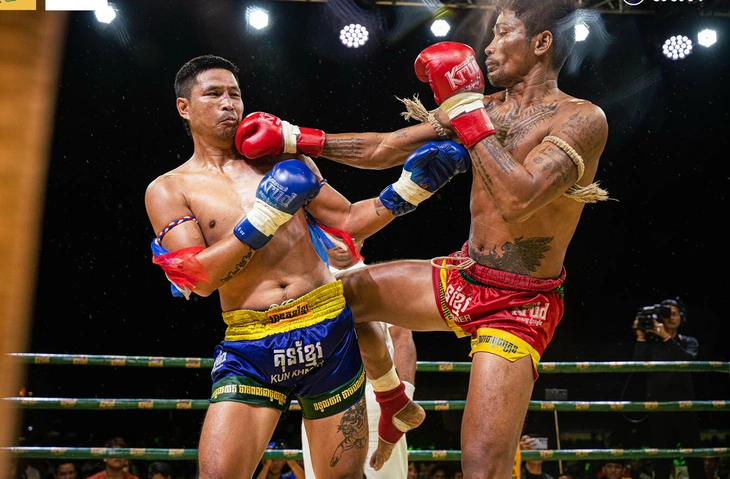
Boxer Prom Samnang (Cambodia) competes with Sudsakorn of Thailand - Photo: NT
700 years of history
Martial arts fans certainly still remember the heated debate surrounding the ring at the 32nd SEA Games, held in Cambodia. At that time, the host Cambodia unexpectedly removed Muay Thai, and added Kun Khmer to the competition program.
That was just one of the fierce "collisions" between two martial arts representing two countries that have hundreds of years of history of "fighting".
It all started with the confusing similarities between the two martial arts. Both Muay Thai and Kun Khmer are traditional martial arts that use 8 body parts including hands, feet, knees, and elbows to fight.
Both have pre-match rituals to honor teachers, traditional music , distinctive costumes, and have been practiced for centuries in lands near the Thai-Cambodian border.
The problem arises when both countries claim their martial art is the “original” and the other is just an imitation.
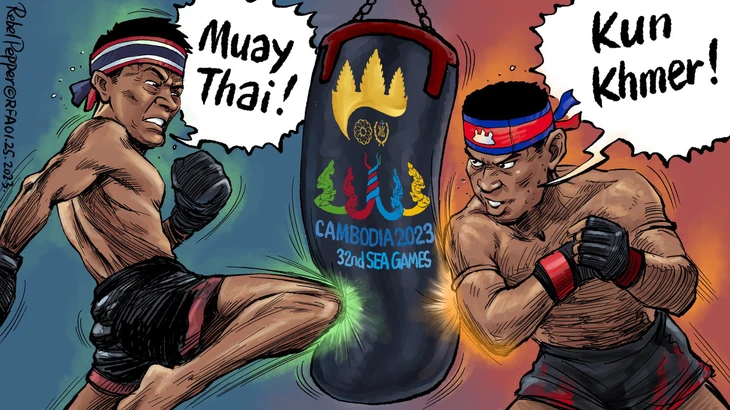
The controversy between Muay Thai and Kun Khmer at SEA Games 32 through cartoons - Photo: RPD
“We are witnessing a war over identity rights,” commented Professor Sophal Ear, a Southeast Asia expert at Arizona State University (USA).
“Cambodia considers Kun Khmer to be the quintessence of Khmer martial arts from the Angkor period. Thailand considers Muay Thai to be the national martial art associated with the military history and royal rule of Ayutthaya. The problem is that both sides have their reasons and lack absolute evidence,” said Professor Ear.
Many Cambodian researchers believe that Muay Thai is a product of Khmer martial arts, systematized and renamed according to Thai identity.
Thailand of course does not accept that. They assert that Muay Thai has existed since the time of King Naresuan (16th century), was practiced in the Siamese army and had a very early competition system.
Schools such as Muay Korat and Muay Chaiya are considered evidence of the independent development of this martial art.
Not only that, in the past few decades, Thailand has successfully brought Muay Thai to the world. Accordingly, Muay Thai has an international federation, a world championship, is included in major sports events such as the Asian Games and is campaigning to enter the Olympics.
“Muay Thai is the only martial art from Southeast Asia that has become a global brand,” Prasert Bunyasiri, a senior official of the Thai Muay Thai Association, said in 2023. “We cannot let someone change its name and claim ownership.”
The never-ending debate
What was supposed to be an academic and sporting affair has become a political and public focus when the 32nd SEA Games takes place in Cambodia in 2023.
In this edition, the host country decided to introduce Kun Khmer instead of Muay Thai. At the same time, the use of the name “Muay Thai” was banned in all documents, signs and award ceremonies.
Not only that, many referees and technical officials of Thai origin were removed from the list of tournament officials.
The response from Thailand was one of outrage. Several Thai martial arts federations called for a boycott of the event. Thai media described Cambodia’s actions as “heritage theft,” and netizens from both countries engaged in a “hashtag war” on social media platforms.
The phrase “#KunKhmerIsNotMuayThai” trended on Thai Twitter, while Cambodia responded with “#MuayThaiIsKhmerLegacy".
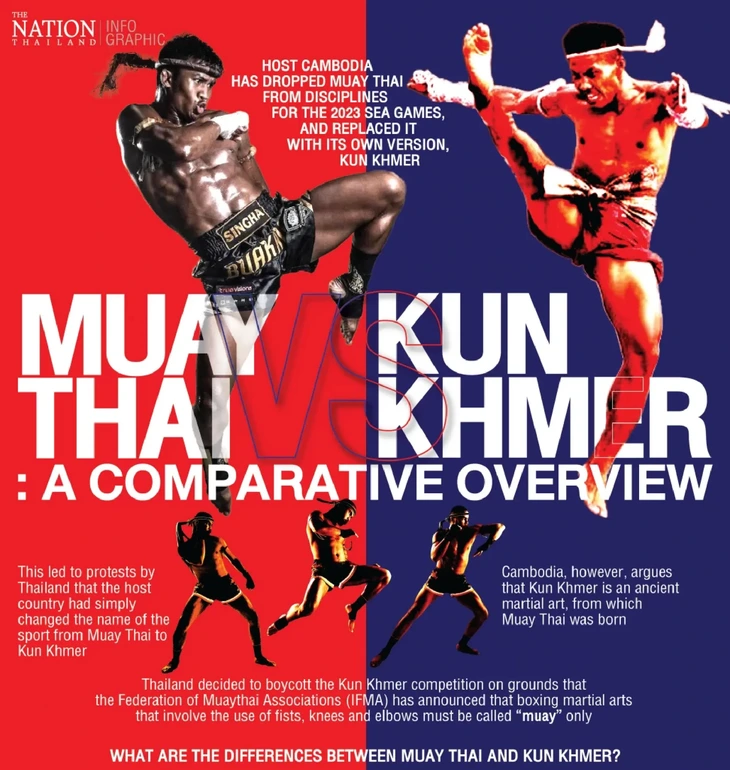
The media of both countries have brought up this topic many times for debate - Photo: NATION
Together we lobby UNESCO for recognition
Dr Kitti Prasertsuk, a researcher of Thai culture at Mahidol University, said the dispute was about more than just names.
“This is an identity crisis. Muay Thai is a symbol of Thailand’s soft power. When Cambodia regained its glory with Kun Khmer, Thais saw it as a threat to their national status,” said Prasertsuk.
Cambodia, on the other hand, claims to be restoring historical truth. Cambodia's Sports Minister stated at a press conference in 2023: "Kun Khmer is a legacy from the Angkorian period. It is time for us to reclaim what belongs to us."
Cambodia also lobbied UNESCO to recognize Kun Khmer as an intangible cultural heritage, while Thailand did the same with Muay Thai. The fact that both countries are seeking international recognition has further heightened the conflict.
From an objective perspective, many experts say it is difficult to determine who is absolutely right. “Both martial arts may have coexisted and influenced each other over the centuries,” Professor Michel Lorrillard, French School of the Far East (EFEO), wrote in a study.
“The history of Southeast Asia is one of interweaving and interplay – it is impossible to impose rigid boundaries like the modern nation-state. There is no right or wrong in this debate,” said Professor Lorrillard.
"Talking" in the ring?
Many people have suggested that why don't the Muay Thai and Kun Khmer factions send representatives to compete in the ring, and thereby receive the title of "authentic martial arts"?
This idea has obviously been around for a long time, and there have been many times when representatives from Thailand and Cambodia have competed against each other. The problem is that each side wants to be the... host. Some famous Kun Khmer boxers such as Prom Samnang and Pich Sambath have defeated Thai opponents. But that was at Kun Khmer tournaments, according to Kun Khmer rules.
Despite many similarities, these two martial arts still have some differences in terms of format, rules, and skills. And that is enough to make it difficult for the representative of one martial art to gain an advantage when competing under the rules of the other.
Another example is kickboxing - a martial art with rules quite similar to Muay Thai, the two sides are quite equal. For example, at the 31st SEA Games held in Vietnam, Thailand won 2 gold medals, 4 silver medals in this sport, while Cambodia also had 1 gold medal, 3 silver medals.
Source: https://tuoitre.vn/muay-thai-va-kun-khmer-700-nam-so-gang-khong-ngung-20250724215555736.htm





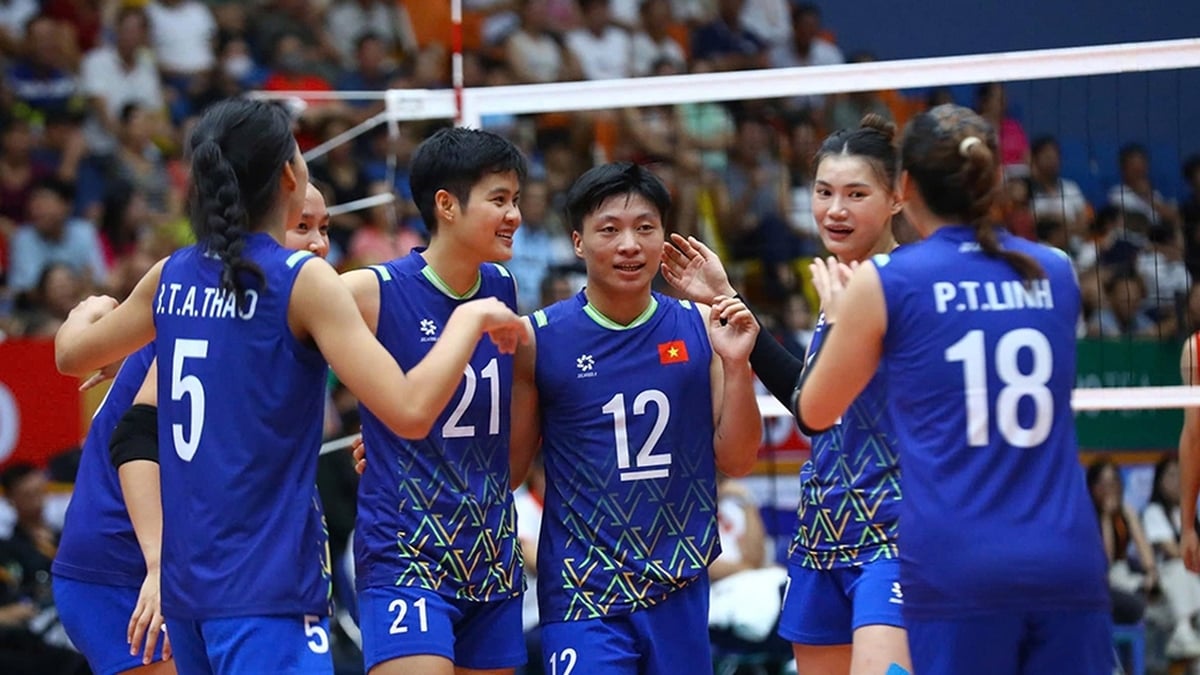




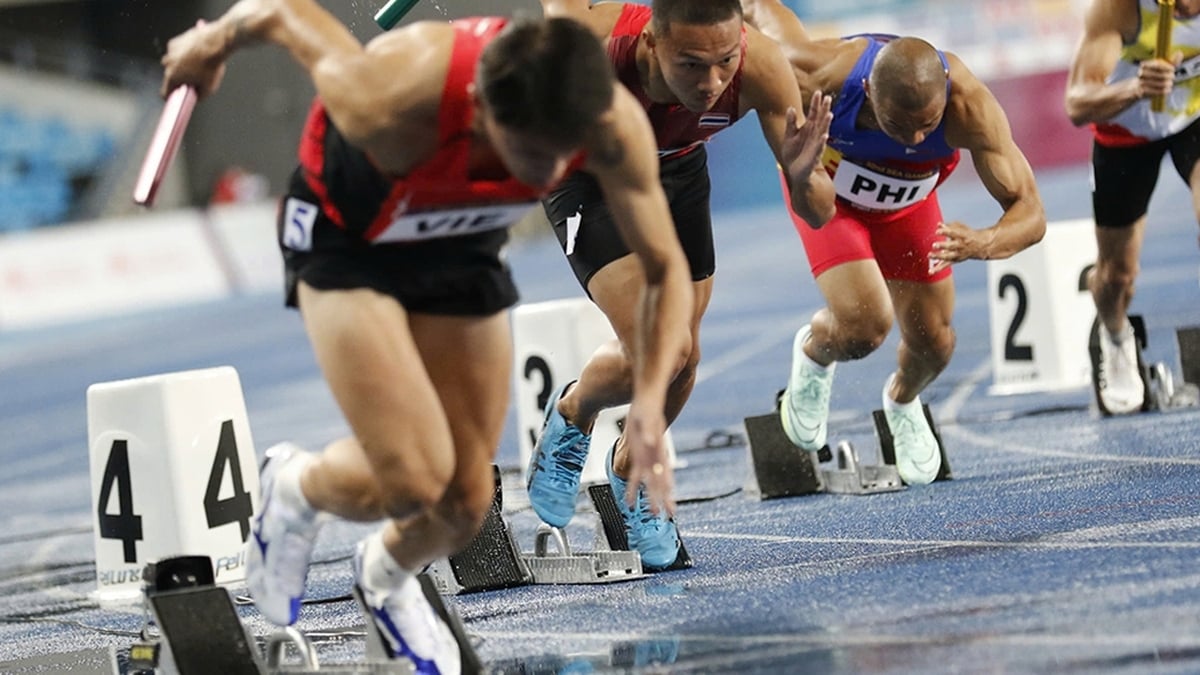












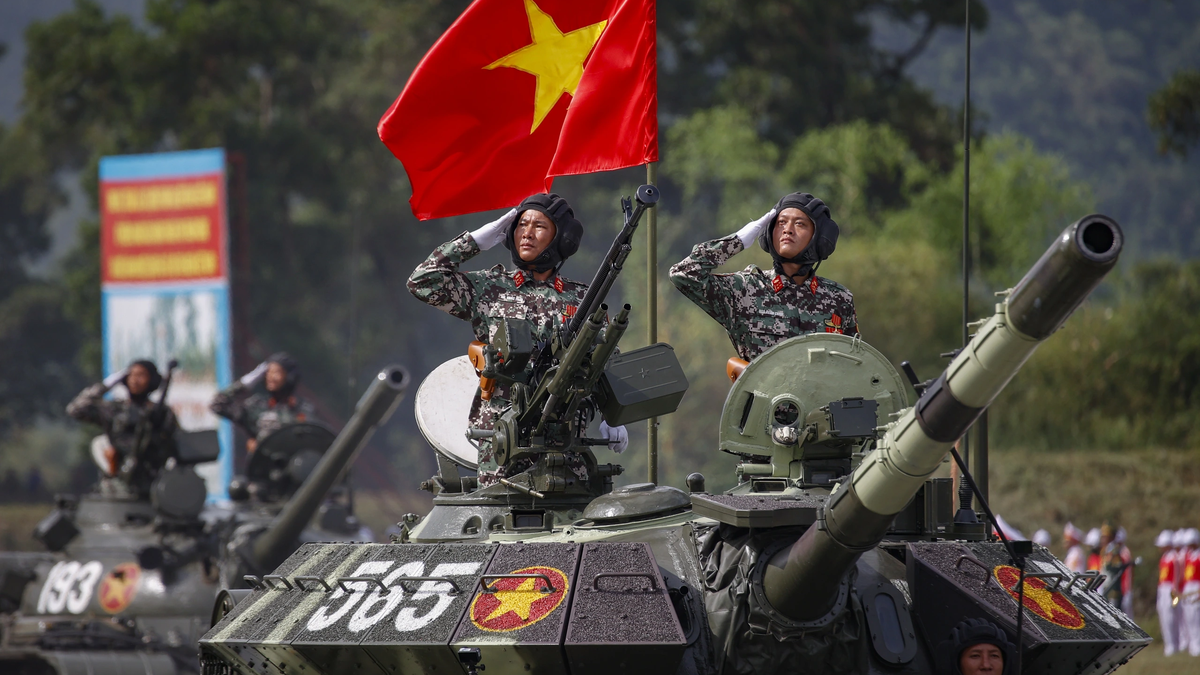
![[Photo] Discover the "wonder" under the sea of Gia Lai](https://vphoto.vietnam.vn/thumb/1200x675/vietnam/resource/IMAGE/2025/8/6/befd4a58bb1245419e86ebe353525f97)



![[Photo] Nghe An: Provincial Road 543D seriously eroded due to floods](https://vphoto.vietnam.vn/thumb/1200x675/vietnam/resource/IMAGE/2025/8/5/5759d3837c26428799f6d929fa274493)

































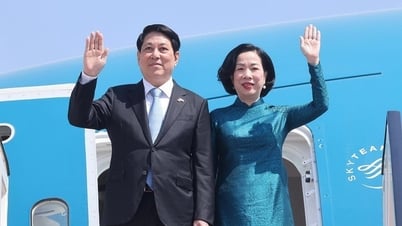


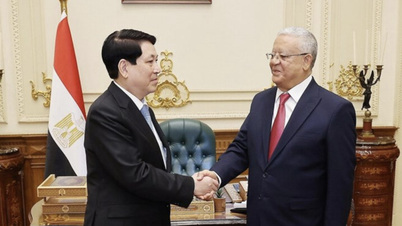






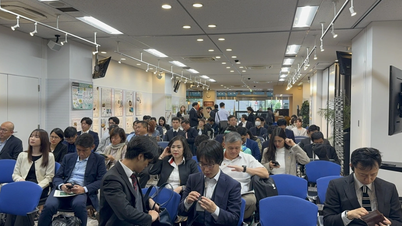


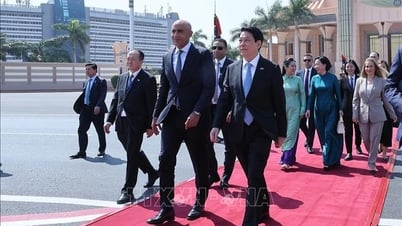




















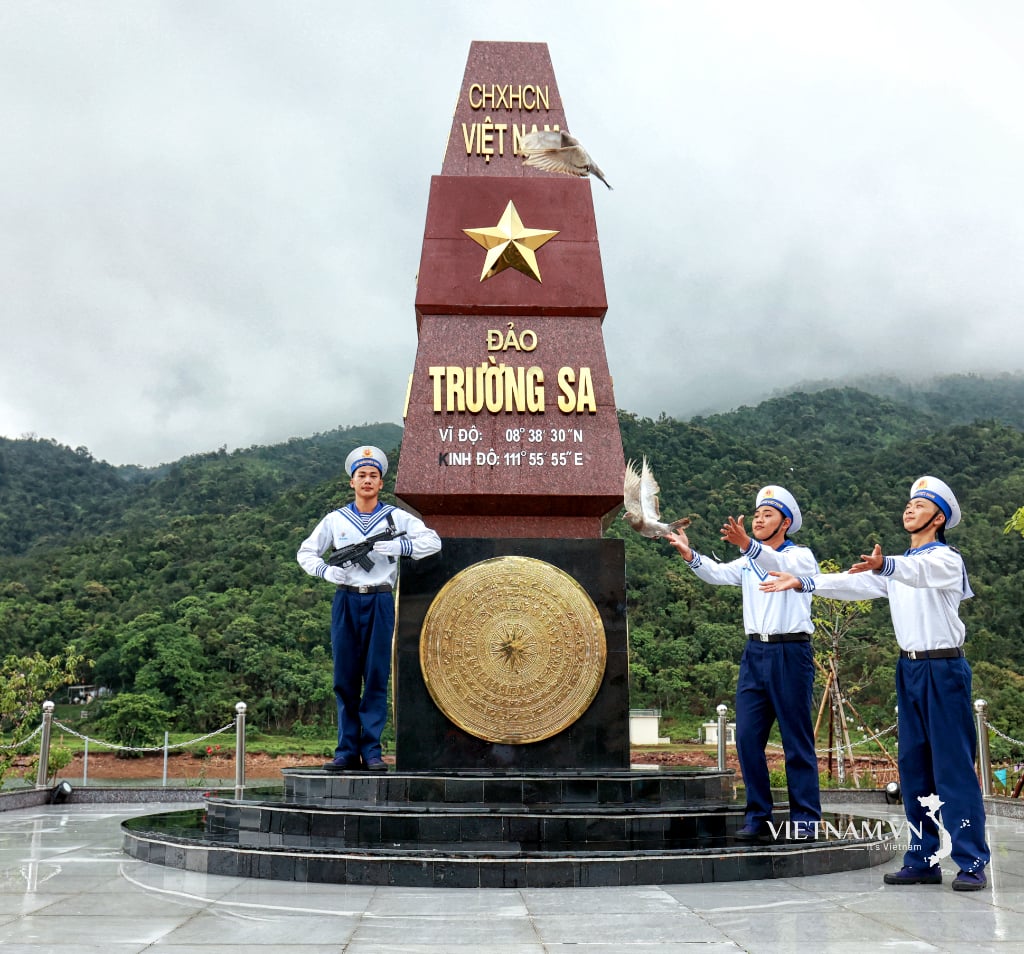
Comment (0)